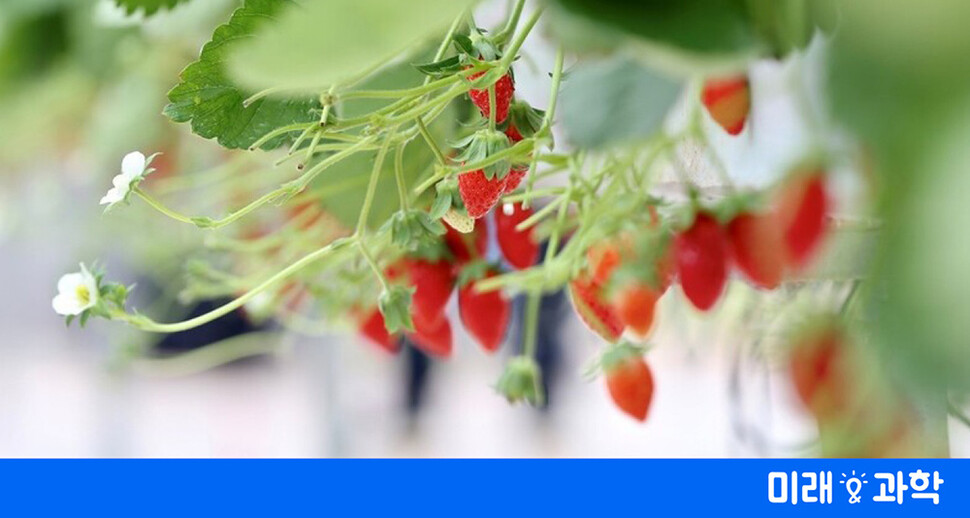First smart agriculture competition held in China
Data science team 3 times harvest and 1.8 times profit

Strawberries grown in a greenhouse with an automated system. Offer Pin Doo
A different smart farming confrontation unfolded between farmers, who are thickened with farming, and researchers of data analysis technology. Hosted last year by Pinduo, an e-commerce platform that connects Chinese agricultural producers and consumers, four technical teams and three farmer teams participated in the competition to grow strawberries for four months. The competition, held with the aim of developing ways to increase agricultural productivity with digital technology, ended with the victory of data scientists using data analysis, artificial intelligence sensors, and greenhouse automation technologies. Organizer Pinduo said data scientists harvested 196% more strawberries. The technical team produced an average of 6.86 kg strawberries and the farmers team produced an average of 2.32 kg. The technology team also performed 75.5% more on average in return on investment.

Plant growth monitoring sensor installed in the greenhouse.
From human and technology, distrust and ignorance to cooperation
A team of data scientists used artificial intelligence and IoT technology to remotely cultivate strawberries for four months. With this technology, we have built a greenhouse automation system that automatically controls temperature and humidity. Accordingly, water and nutrients could be supplied more accurately. This is thanks to the automation of what farmers do in traditional farming. The championship was won by a team composed of researchers at the China Agricultural University and the National Agricultural Advanced Equipment Technology Research Center. They collected farmers’ experiences, past cultivation data, and strawberry images using the’knowledge graph’ technology, an artificial intelligence-based search technique, and then combined them with water, fertilizer, and greenhouse climate models to establish a strawberry cultivation strategy based on artificial intelligence. . Knowledge Graph is a search service developed by Google, and when a search word is entered, relevant information is displayed together. After the competition, a university team that participated in the competition set up a company to disseminate this agricultural technology. Cheng Biao, who led the team, said in a press release, “Farmers distrust data scientists because they think they are flashy but useless, and data scientists ignore them because they think farmers are too old-fashioned.” “I realized the importance of combining the strengths and working together.” The first smart agricultural competition held this time was held by Pindudu and China Agricultural University, and the Food and Agriculture Organization of the United Nations was in charge of technical advice.

Greenhouse cultivation by farmers team.
Lack of workforce and aging… The rural choice
Artificial intelligence can excel in data analysis. If you use it well, you can greatly increase your productivity. Moreover, artificial intelligence doesn’t need a separate break like humans, so you don’t have to worry about working hours. Considering the increasingly severe labor shortage and the situation in rural areas around the world that are struggling with aging, the reality is that the need for smart agriculture using digital technology has grown that much. Market research firm Accenture predicts that in advanced countries, labor productivity will increase by 40% by 2025 due to the introduction of artificial intelligence technology. In a report released last year by the World Economic Forum,’The Future of Jobs in 2020′, it predicts that 85 million jobs will disappear by 2025 as more and more work goes from humans to machines. However, the introduction of new technologies does not only eliminate jobs from the past, but also creates jobs that have never been before. It is difficult to assure which one is more effective, but the forum scores more that as the factors involved in labor expand from’people, machines’ to’people, machines, algorithms’, more jobs can be created than disappearing Is giving. Senior Reporter Kwak Nopil [email protected], ▶Go to Kwak Nopil’s Future Window
